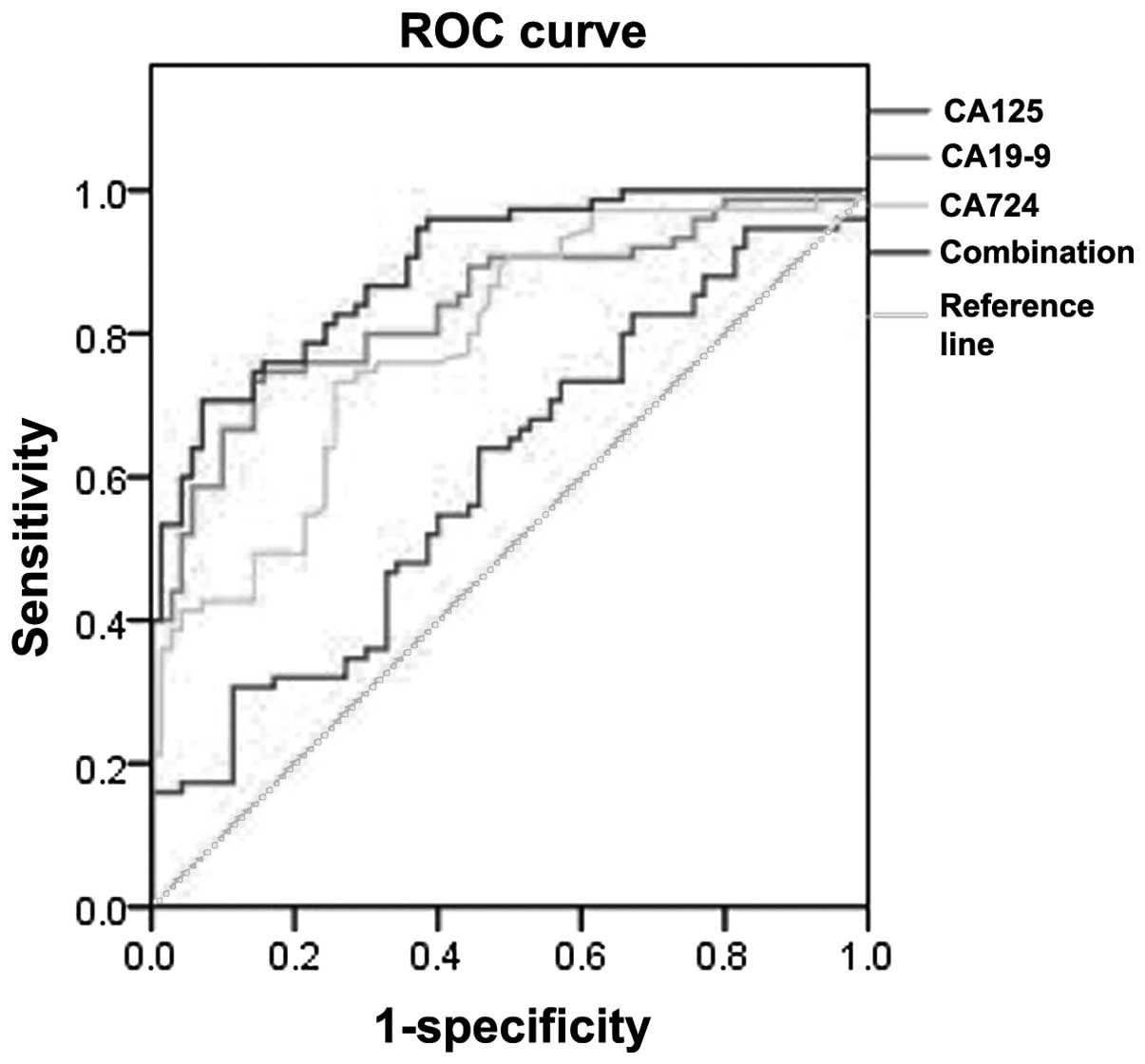Clinical value of serum tumor markers CA19‑9, CA125 and CA72-4 in the diagnosis of pancreatic carcinoma
- Authors:
- Published online on: December 12, 2013 https://doi.org/10.3892/mco.2013.226
- Pages: 265-268
Metrics: Total
Views: 0 (Spandidos Publications: | PMC Statistics: )
Total PDF Downloads: 0 (Spandidos Publications: | PMC Statistics: )
Abstract
CA125 and CA72-4 are members of a family of high‑molecular weight glycosylated proteins and are commonly considered as biomarkers in the diagnosis of ovarian and gastric cancer, respectively. However, recent studies have revealed that these two markers may be of clinical value in the diagnosis of pancreatic cancer. As the availability of data regarding CA72-4 and CA125 in the diagnosis of pancreatic cancer is limited, the aim of this study was to investigate the clinical value of serum tumor markers CA19‑9, CA125 and CA72-4 in the diagnosis of pancreatic carcinoma according to logistic regression analysis and receiver operating characteristic (ROC) curves and to investigate the correlation of these markers with tumor TNM stage and location. An immunoradiometric assay was used to measure pre‑operative serum CA19‑9, CA125 and CA72-4 levels in 75 patients with pancreatic carcinoma and 70 patients with benign pancreatic diseases. The concentrations of serum CA19‑9, CA125 and CA72-4 in patients with pancreatic carcinoma were found to be significantly higher (P<0.05) compared with those with benign pancreatic diseases. The combined detection of two serum markers (CA19‑9 + CA72-4) yielded a ROC value of 0.895 that was significantly higher compared to others (P<0.05) in distinguishing pancreatic cancer from benign pancreatic diseases. At optimal cut‑off, the sensitivity and specificity of combined detection (CA19‑9 + CA72-4) were 70.6 and 92.8%, respectively. The concentrations of CA125 and CA19‑9 in patients with pancreatic adenocarcinoma were found to be significantly higher (P<0.05) compared with those of pancreatic neuroendocrine carcinoma. In conclusion, the combined detection of CA19‑9 and CA72-4) may significantly improve the diagnostic specificity and the serum concentrations of CA125 and CA19‑9 are correlated with tumor histological type.










